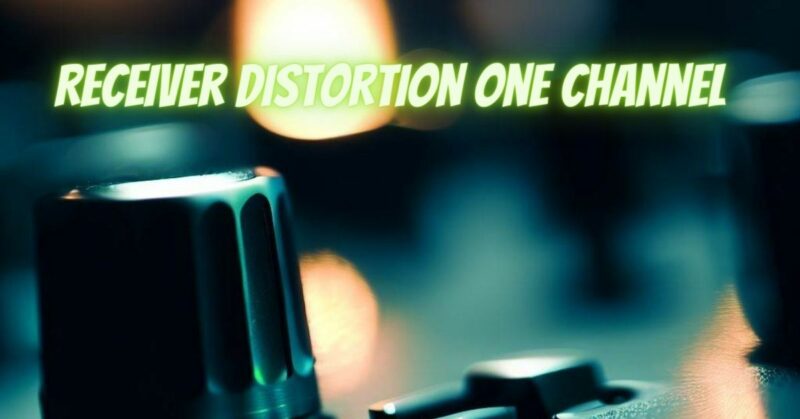Experiencing distortion in just one channel of your receiver can be both perplexing and frustrating. This issue can detract from your audio experience and disrupt the balance of your sound system. Distortion in one channel can stem from various factors, ranging from external connections to internal amplifier issues. In this article, we’ll delve into the potential causes of distortion in one channel of your receiver and guide you through troubleshooting steps to identify and resolve the problem.
Possible Causes of Distortion
Loose or Damaged Cable Connections: One of the most common causes of distortion is a loose or damaged cable connection. Check the cables connecting your audio source (such as a CD player or media player) to the receiver. Make sure they are securely plugged into the appropriate input jacks.
Intermittent Wiring: Wiring within the receiver or speaker can become intermittent due to factors like vibrations or temperature changes. These intermittent connections can result in distortion.
Speaker Issues: A malfunctioning or damaged speaker driver in one channel can produce distortion. Test the affected channel with a different speaker to determine if the issue persists.
Amplifier Problems: Issues within the amplifier section of your receiver, such as malfunctioning components or electrical faults, can lead to distortion in one channel.
Troubleshooting Steps
- Speaker Swap: If possible, swap the speakers between the channels. If the distortion follows the speaker, the problem is likely with the speaker. If the distortion stays in the same channel, the issue might be with the receiver.
- Cable Check: Inspect all cable connections, ensuring they are securely plugged in. Replace any damaged cables.
- Balance and Fade Settings: Some receivers have balance and fade settings that can inadvertently cause distortion. Make sure these settings are centered.
- Source Test: Test the affected channel with different audio sources to determine if the distortion occurs consistently across sources.
- Factory Reset: Consult your receiver’s manual to perform a factory reset. This can help eliminate any unintended settings causing the distortion.
- Internal Inspection: If the issue persists, consider seeking professional help to inspect the internal components of the receiver. Internal amplifier issues might require expert diagnosis and repair.
Preventing Distortion and Maintaining Quality
- Regular Maintenance: Keep your receiver and speaker components clean and well-maintained to prevent issues caused by dust or debris.
- Proper Ventilation: Ensure your receiver has adequate ventilation to prevent overheating, which can affect its performance.
- Quality Cables: Use high-quality audio cables and ensure they are properly shielded to reduce the risk of interference and signal degradation.
- Speaker Placement: Place your speakers in an appropriate location to prevent vibrations that could disrupt connections.
- Professional Assistance: If the distortion persists despite your troubleshooting efforts, consider seeking help from a qualified technician who specializes in audio equipment repair.
Addressing distortion in one channel of your receiver requires a systematic approach to diagnose the underlying cause. By checking connections, testing speakers, evaluating audio sources, and considering internal amplifier issues, you can identify the problem and take steps to rectify it. Regular maintenance and attention to detail will help maintain the quality of your audio system and prevent issues that can lead to distortion and disruptions in your listening experience.


